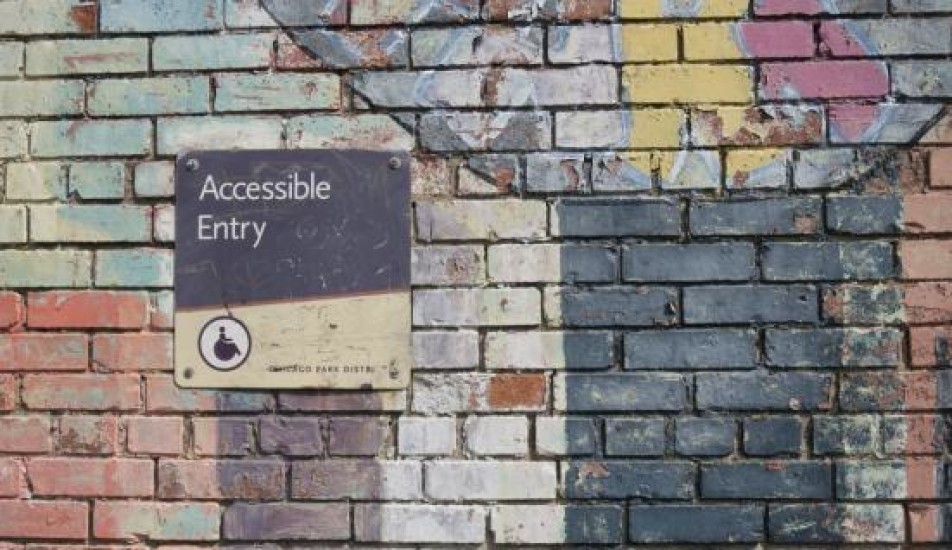This autumn, millions of Saturday night sofa-slumpers have been cheering on Ellie Simmonds as she seeks to repeat her Paralympian successes on the Strictly dancefloor. While her inclusion may have offended a few professional contrarians, it's a small but welcome piece of inclusive commissioning by the BBC at the end of a challenging summer of cultural ableism.
But ableism isn’t just a problem in casting, commissioning and cultural expression, it pervades the entirety of the cultural sector. Yes, many cultural organisations are putting significant effort into improving provision for disabled audience members but, overall, we are not serving disabled people well enough.
There is no doubt that producing work that meets disabled people’s needs and aspirations is crucial to narrowing that gap. But the bigger and more fundamental challenge is tackling the systemic and infrastructural ways that disabled audience members are discriminated against – simply making it hard for them to buy a ticket, get to venues or enjoy the performance once there.
A compelling case
Prior to the pandemic, the sector had been making slow, uneven progress in providing disabled audience members with appropriate programming and infrastructure, but there’s very real concern that greater accessibility is not being sufficiently prioritised as audiences return.
According to the Taking Part survey, in 2005/6 nearly 10% fewer people with a self-defined ‘long-term illness or disability’ engaged with arts during the previous 12 months, compared to those without. By 2019/20 this had shrunk to just 0.5%. Meanwhile, evidence from our Cultural Participation Monitor showed that the arts achieved greater equality between disabled and non-disabled people than other comparable activities such as sport and exercise, or travel and holidays.
But the pandemic has knocked this progress back. Disabled people are less satisfied with life after the pandemic, more of them say they are financially worse off and, as the cost-of-living crisis kicks in, a higher proportion of disabled people say their spending on entertainment or leisure will decrease compared to pre-pandemic levels.
Disabled people are also much more risk-averse, with 30% agreeing that their attendance at cultural events is back to normal, compared with 40% of non-disabled people, and only 29% are now happy to attend a cultural event without reservations, compared with 41%. A third also expect to attend (for example) a live performance less regularly in the future, while only a quarter of non-disabled people do. This suggests that the gap in cultural engagement levels between disabled and non-disabled people is liable to widen again post-pandemic.
Streamlining a soup of schemes
There is no doubt that producing work that meets disabled people’s needs and aspirations is crucial to narrowing that gap. But the bigger and more fundamental challenge is tackling the systemic and infrastructural ways that disabled audience members are discriminated against – simply making it hard for them to buy a ticket, get to venues or enjoy the performance once there.
The Hynt scheme, run by Arts Council Wales, is designed to deliver a consistent offer for visitors with an impairment or specific access requirement, as well as for their companions. However, they’ve struggled to give it the funding it needs to grow nationwide. Meanwhile, Disability Card run by Nimbus offers substanti
al benefits to its users and is usable in an impressive number of places.
But these are separate schemes with no overlapping benefits, and the picture for disabled audiences is further complicated by CEA Card which works in cinemas and a plethora of schemes run by individual institutions such as the Lowry’s Access register, or the Barbican’s Access Membership, to name a few. None of these offer universal advantages, are interoperable, or benefit from network effects generated by digital technologies.
But, in excellent news, the UK-wide access scheme for D/deaf, disabled and neurodivergent people, which ACE is championing, has the potential to significantly improve the experience of disabled (and, by extension, all) audience members by addressing all these issues in a single scheme.
Researching the right approach
The scheme is informed by recommendations from The Audience Agency, from a feasibility study commissioned by ACE. As with all our projects, we used service design to structure our research, carrying out bespoke workshops with a range of disabled people, so that we could properly understand their needs.
Crucially, our research was based on the social model of disability, not a medical one. Using service design means we were able to think about the needs of disabled audience members from when they start thinking about attending a cultural venue or event, all the way through buying a ticket, their experience onsite and what happens afterwards.
Our research showed that disabled people experience a confused, fragmented and inconsistent provision of services at cultural venues and while experiencing cultural activities, which fail to meet their access needs. On the upside, we found that there is general acceptance of – and enthusiasm for – the development of a nationally recognised access scheme to meet those various and diverse requirements.
We’ve blogged about our scheme but the key elements are:
- Creating three sets of standards: quality standards for disabled people’s engagement experience; information standards for how access services are communicated; and technical standards covering how requirements are represented in data and how that data is exchanged.
- Creating branding that can be used by venues participating in the scheme, showing they meet the scheme’s standards.
- Creating a central body to manage the scheme to ensure complex elements such as running the membership schemes, as well as the engagement with the sector and the tech vendors works properly.
Equality benefits everyone
As we embark on this corrective process, how is tackling ableism (which, to be clear, is essential in and of itself) going to benefit everyone else?
Innovations devised to meet the needs of disabled audiences routinely result in benefits beyond them. Perhaps one of the starkest examples is provided by the research from Stagetext in 2021, which found half of people have TV subtitles switched on some of the time. Similarly, Battersea Arts Centre’s decision to become a relaxed venue has been enjoyed across the range of its audiences.
Our research underlined this finding “a far larger absolute number of non-disabled people also consider [access features] ‘essential’ or ‘desirable’… with most being at least ‘desired’ by more than a third of the population”, suggesting that they are simply part of good customer service.
Which is why we believe there are two positive benefits to ACE’s access scheme that have the potential to deliver benefits to the whole population – so long as it delivers its intended benefits to the core audiences:
- The first benefit falls out of the digital development necessary to make the scheme work. By creating the digital standards and technical architecture designed to deliver the data flows, the scheme will create a platform that can support all sorts of hitherto unidentified uses. The digital development will also create a dataset of participating venues, which could become a vital part of the foundational digital infrastructure of the sector.
- By creating minimum service standards for disabled people, the sector will show other sectors what can and should be done to tackle ableism - applicable to ticketed sports venues, leisure centres, theme parks, shopping centres and many other venues. If the IP is licenced and shared for commercial return, then a scheme designed to deliver benefits to disabled audiences could provide financial returns for the whole sector.
Perhaps that is the best way to think about how we combat ableism. By recognising that, to deliver equality for everyone, we should be thinking about disabled audience members as natural innovators, showing the rest of us how to do things better. And maybe the fuss about the inclusion of Ellie Simmonds in Strictly shows that there is still much work to do before fully inclusive culture is not a ‘big gesture’, but an utterly unremarkable feature of all sectors. The work continues.
This article was originally published in Arts Professional as part of a series sharing insights into the audiences for arts and culture.



